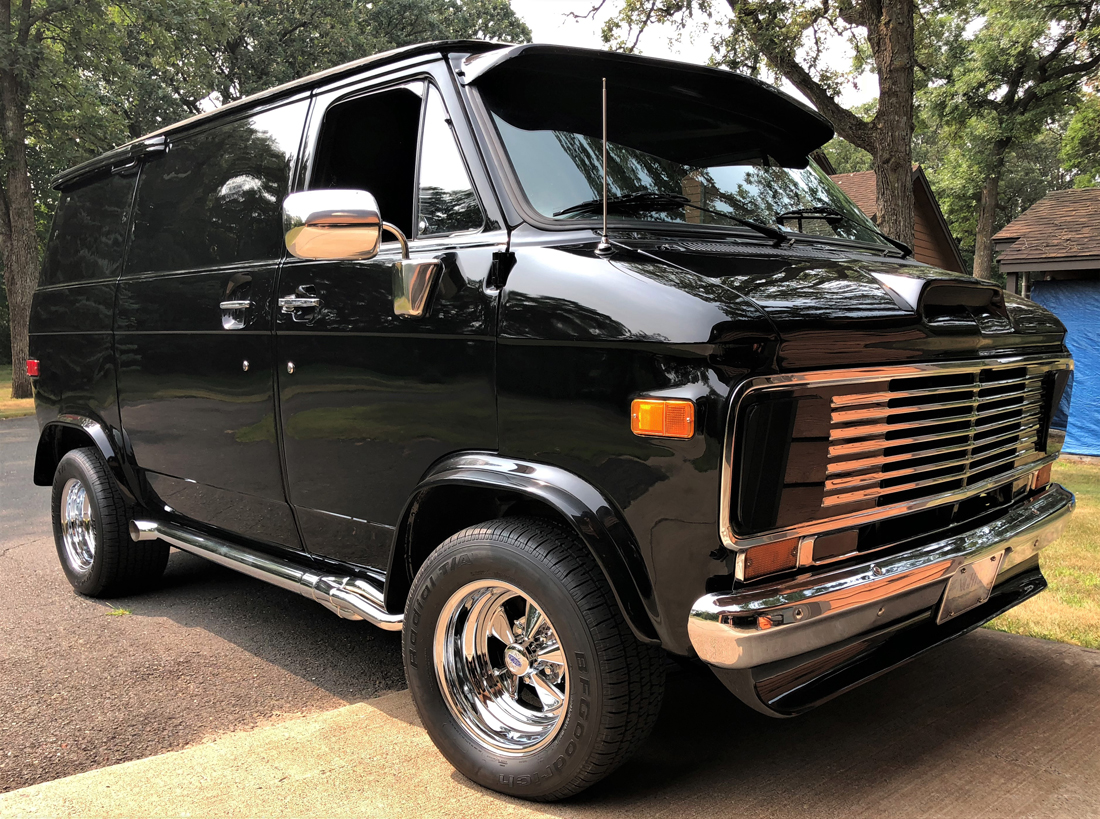 1975 Chevy Van
1975 Chevy Van
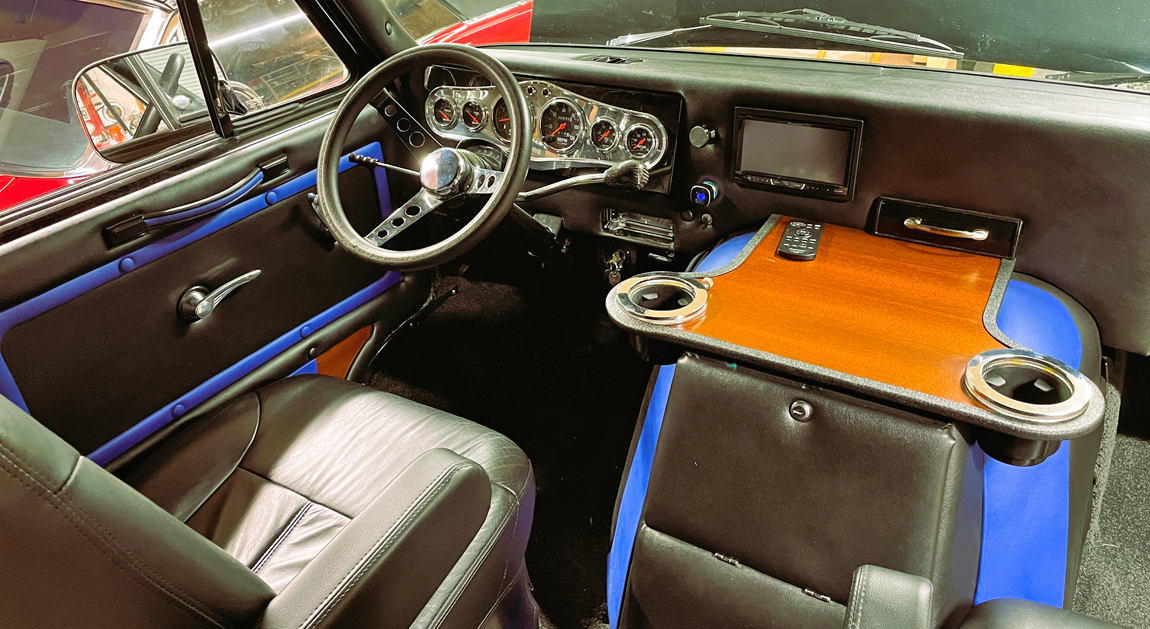
Driver's compartment interior
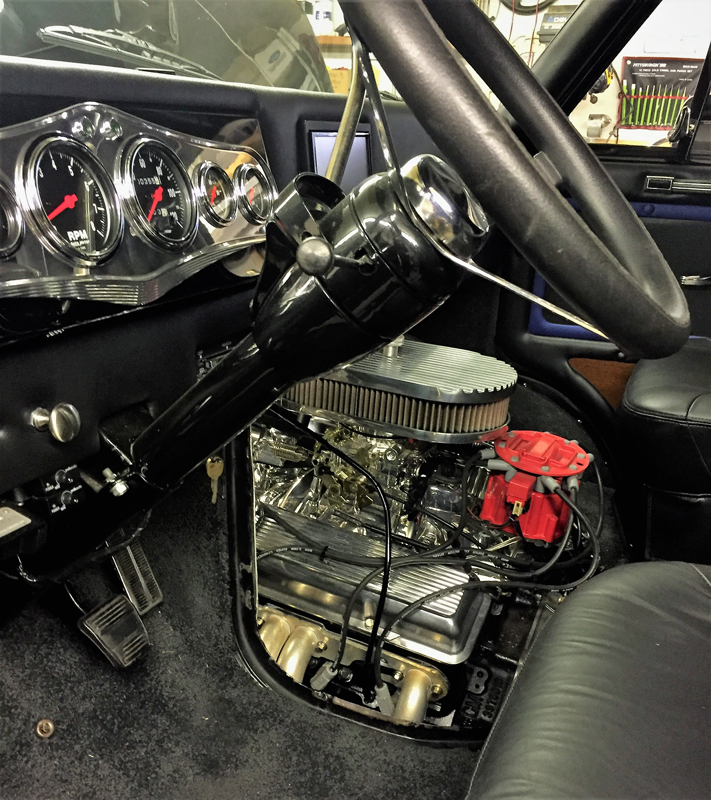
350 cubic inch (bored .030" over)
4 bolts mains | | Edelbrock cam, intake, carb
Casler headers | turbo 350 transmission
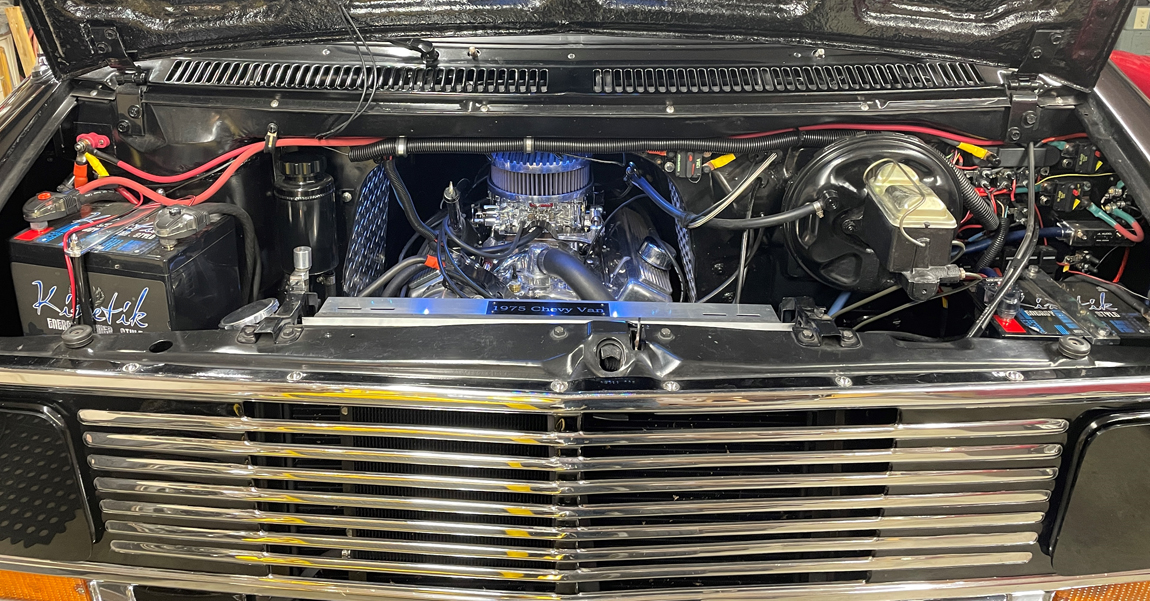
Upgraded dual battery system charged by a Denslo 240 amp alternator using a serpentine belt system
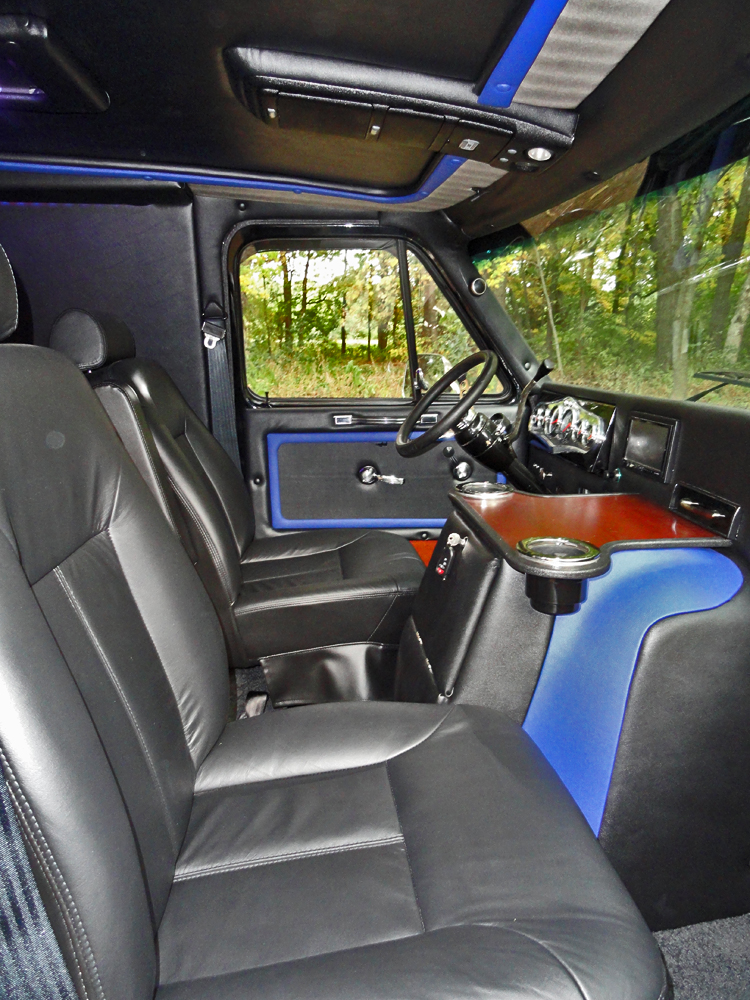
The overhead console is from a Ford F-150. Seats are leather and were manufactured in Texas.
Original dash was replaced with my own design using sheet metal and building up
as I went along.
Makore is the wood specie used for the tray, door panels and top of the amp rack.
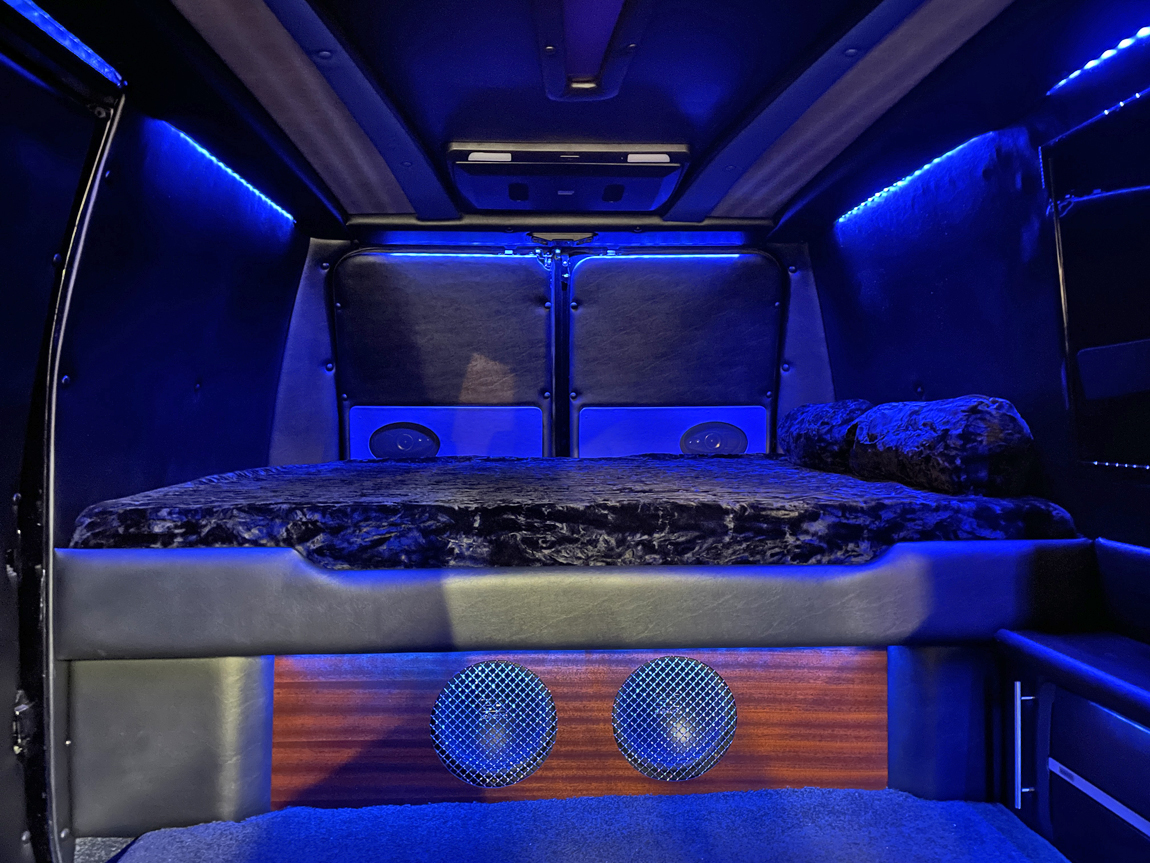
Six inches of foam was used for the bed. My daughter stitched up the bed sheets and pillows.
A 22" monitor that swings open is placed over the bed as for me, it is more comfortable
to watch video from the captain's chair that swivel around.
The LED lights in the ceiling / floor can change colors via remote and can play to the music as well.
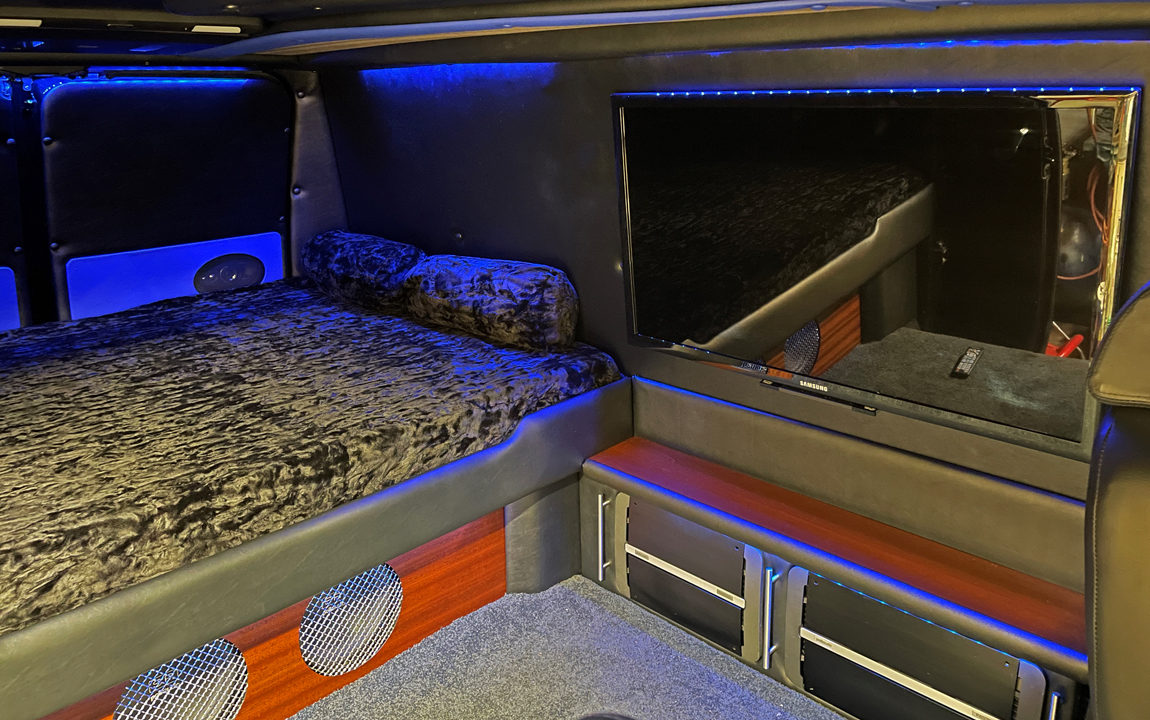
Samsung 40" monitor, two Polk Audio amps, subs & speakers, Pioneer head unit.
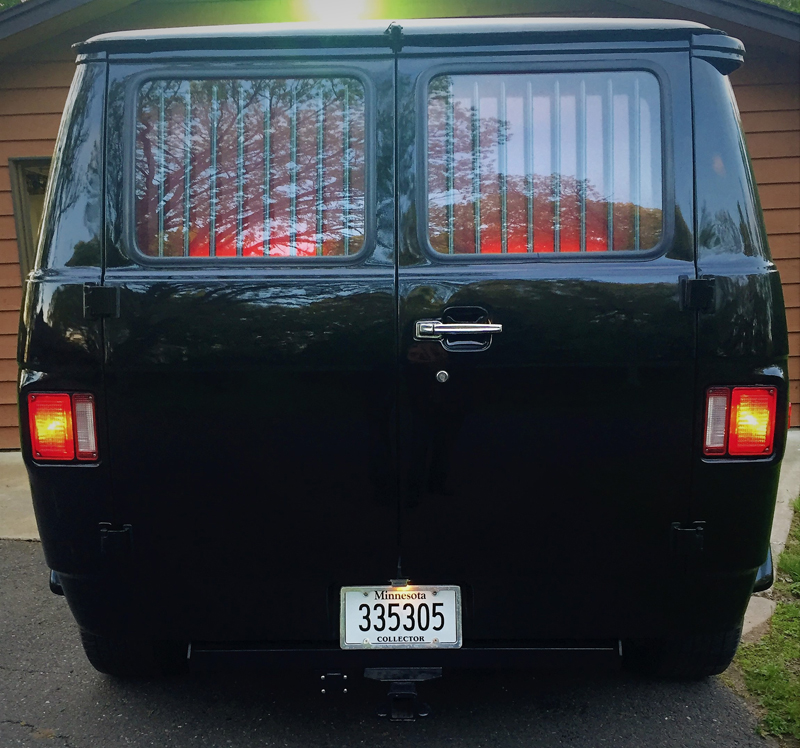
The jailbars in the back windows is this van's signature trademark and have been in the back widows since I owned it.

2012 - First time out after a 5 year restoration.
No license plates, rear view mirrors, running boards and the tailights need yet to be trimmed-out in black.
Since this photo, I have taken off the running boards and added chrome sides pipes and went back to Cragar wheels.
I found this pic online. Someone out there photoshopped Sleep's Dopesmoker album cover over this photo.
I thought it was a job well done. Any airbrush artists out there looking for a project?
Album artwork was masterfully done by Illustrator & Painter © Arik Moonhawk Roper
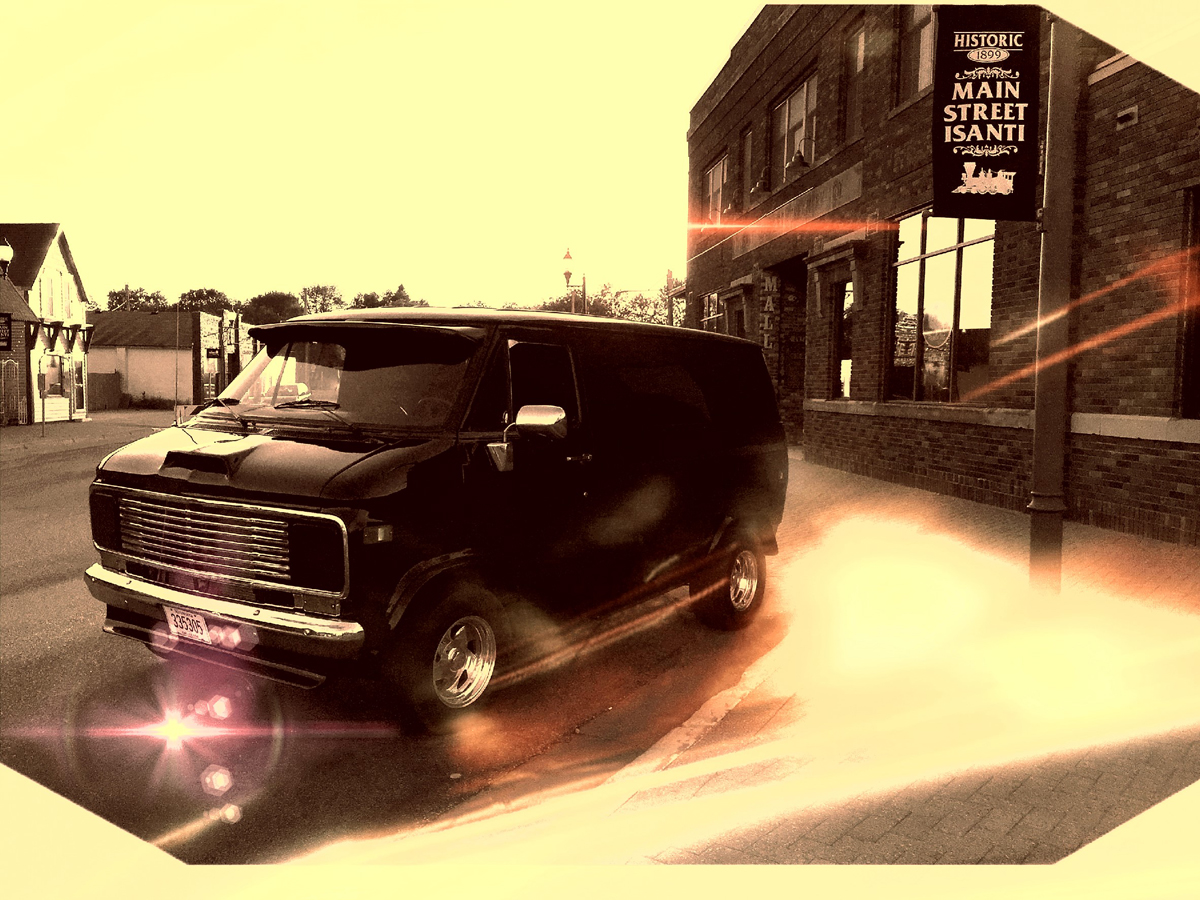
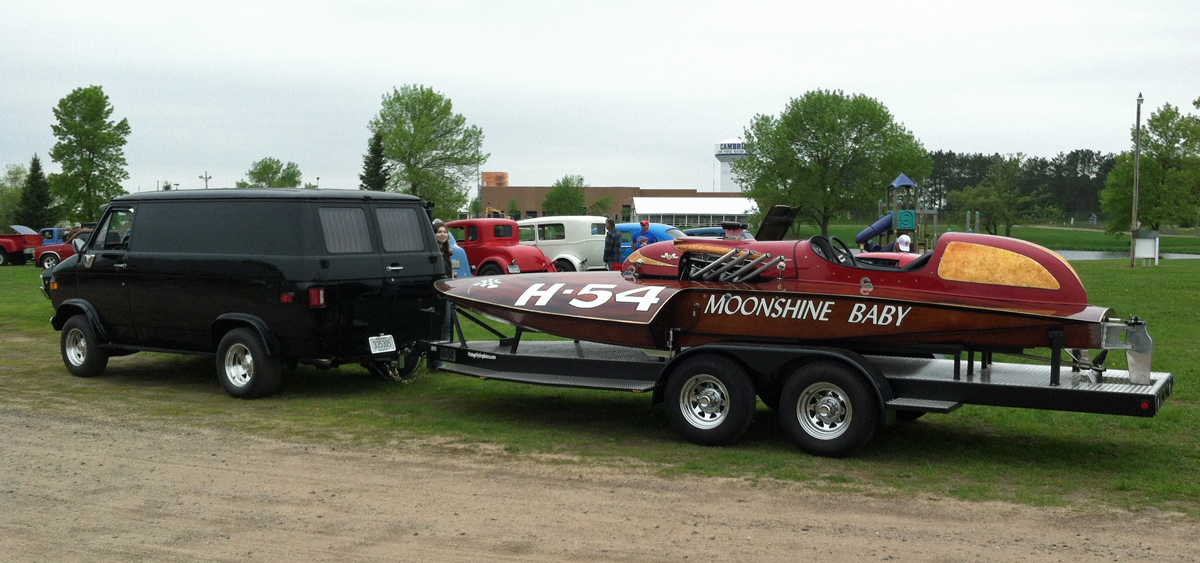
I restored a vintage inboard hydroplane that raced all of the country from 1961-1976 and use the van to haul it around.
|
Breif History on the Chevy Van
Chevrolet introduced its first van in 1961 based on the Corvair. The
Greenbrier van design included a rear engine similar to the Volkswagen
bus at the time.
In 1971, the Chevy van received a major redesign, moving the engine forward of
the driver with a short nose and hood. This major restyle followed the engine-forward
design of the competing 1968 Ford Econoline. The
van employed stronger, truck
style hubs and brakes with A-arm independent front suspension. It's really
incredible how Chevrolet constructed the van and how many welds were done
to hold the entire thing together and welding to the frame. All the van's suspension / steering
parts came from the Chevy C-series pickup trucks.
It was obvious that the style was a winner as Chevy continued this basic
body style until the end of the 1996 model year. A 25 year model run...quite
impressive acheivement for them.
In 1975, Chevrolet offered three full sized
vans; the G10, G20 and G30. All three vans were sold to everyday consumers,
contractors and business owners. The Chevrolet G-Series vans were sold
according to vehicle properties. The G10 was a quarter-ton van, G20 was a
half-ton, G30 was a full-ton model. The G-Series vans were available in
six- and eight-cylinder engines. The six-cylinder engines were a 4.1-liter
(250 cu in) straight six . The second was a 4.8-liter (292 cu in) straight-six
engine. The 5.7-liter (350 cu in) V-8 offerings were a two-barrel carb, (what
my van originally had), a four-barrel version and a four-barrel HD version
all touting progressively higher HP numbers. The largest engine was the 6.6
liter (400 cu in) V-8.
|
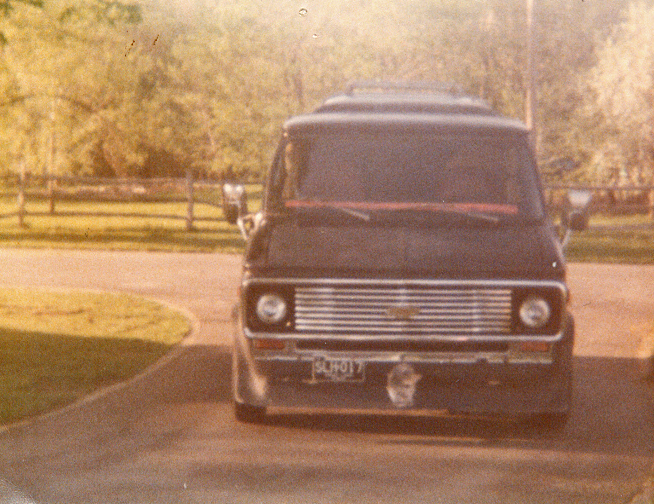
|
I purchased this 1975 Chevy G-10 in 1978 when I was 16 years old from a repo lot
in Standale, Michigan. I was looking at buying either this van or a 1971
Mustang but my father didn't like the Mustang and said he would loan me the
$ for the van as it was a more practical vehicle for me (I needed to haul my drum kit around). Being in solid shape
and it had only 29k miles on it helped secure the loan. Dad mentioned that
the van was going to be something that could get me in trouble, so watch
it and stay out of trouble. As you all know vans were the craze back in that
time frame. My older brother already was driving his 75 Chevy Van prior to
me buying mine and they really were the thing to have back then. I also had
3 buddies who owned and were customizing their vans too.
My van had plenty of the 1970s tricks: Olds Vista Cruiser roof grafted
on top, full front spoiler and fender flares (moulded into the body), jailbars
in the back windows (lit up at night) and Munster-styled lanterns (on the
upper back 1/4 panels). The photo above was taken in 1979 after I hit a pile
of wet leaves and ripped the spoiler up pretty good and I lost the skull
head moulded into that. The interior was red carpet, bar with red lights,
a comfy bedroom and ceiling full of mirrors with black fun-fur everywhere.
I had alot of fun in her back then.
2022 marks my 44th year of ownership. The van went from being my home-away-from-home
during the late 1970s - early 80s. The late 80s bought a different
interior / more paint jobs. Around the mid 90s, was converted to
a camping style of van. After the kids grew up and moved on, it mostly sat
in the yard & rotted away. I finished up a bunch of other projects and
decided to restore my van around 2006 and finished up in 2012.
I have more time & money in it than I could
ever recoup. But have lots of fun still working on it. Hard to put a price tag on that fun.
Click here
if you would like to see / read further as I restored it in it's most recent
configuration. After that, is another webpage showing the van throughout
the years.
©2022 Phil
Spruit
|
|












